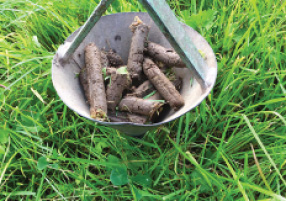 Aphids
Aphids
Winter cereal crops depending on sowing date are at risk from the impact of aphids, aphids are responsible for the infection and spread of BYDV (barley yellow dwarf virus). BYDV can reduce yield by 15-30% in wheat crops and 50-75% in barley crops. Due to the increased concern all farmers are advised to assess all crops but especially early sown crops for the risk of BYDV. BYDV thrives in early drilled crops and warm weather. The spraying threshold for aphids is referred to as the 170 degree rule, which is where the accumulated daily temperatures after crop emergence reach 170 degrees. In the absence of a neonicotinoid seed dressing and the increased incidence of pyrethroid resistance aphicide application timings must be correct and applied at the correct growth stage to ensure only one treatment is needed.
- Early October sown crops (high risk) apply treatment at GS25 (late October/ early November)
- Middle of October sown crops (medium risk) apply treatment in early November at 2-3 leaf stage
- Crops emerging after mid-November do not require treatment unless weather is mild and aphids are present or field has a history of aphid problems.
SLUGS
Slugs can cause serious damage to all winter cereal crops. Slugs significantly damage crops by hollowing the grain especially in wheat and the grazing of the young plants which can lead to total crop loss. Winter wheat trials in Teagasc in Oak Park showed results of plant populations of 34% and reduced the grain yield at harvest yield by 1.5 t/ha. The best control of slugs in winter cereals is achieved by applying slug pellets as a broadcast treatment of 30-40 slug pellets per m2 onto the soil surface as soon after sowing as possible.
WEED CONTROL
All growers should assess weed history of each field and target control based on the most competitive weeds such as cleavers, sterile brome, wild oats, charlock and grasses. Farmers should try to apply a pre-emergence herbicide where possible to give the best control of weeds. Farmers should identify the products with the relative active ingredients that will control the largest range of their problem weeds. On crops that no pre emergence herbicide was used farmers should apply a broad acting post emergence herbicide at the 2-3 leaf stage, herbicide selection should be based on field history. For a specific weed control strategy contact your local Drummond’s branch or technical sales advisor.
SOIL TESTING
 Drummonds can carry out soil testing, soil mapping and variable rate lime spreading on your farm and advise you on best strategy for your soil and your farm based on your soil testing results.
Drummonds can carry out soil testing, soil mapping and variable rate lime spreading on your farm and advise you on best strategy for your soil and your farm based on your soil testing results.
Contact your local Drummond’s branch or your local Drummonds Technical Sales Advisor.

